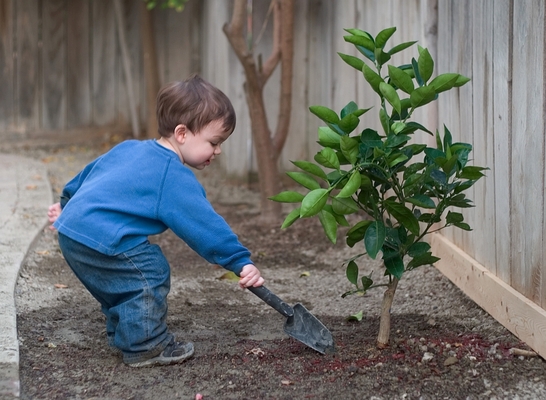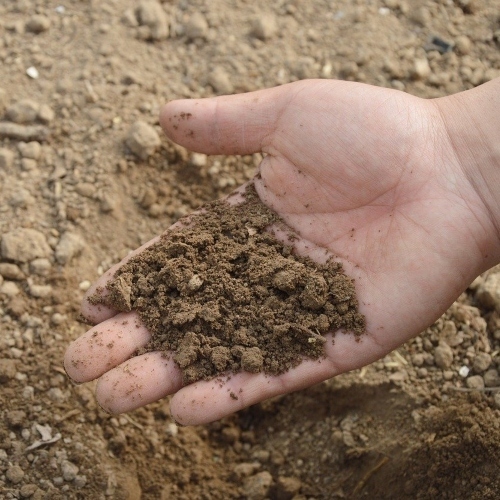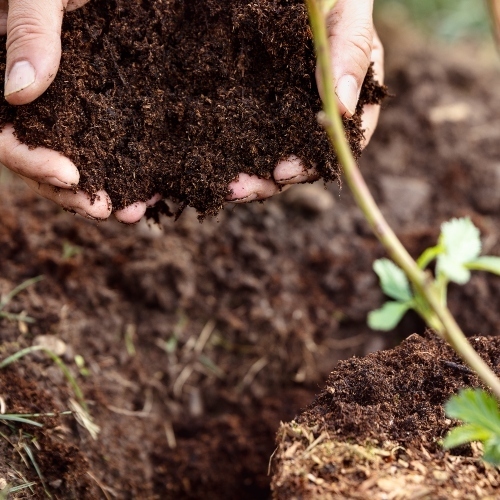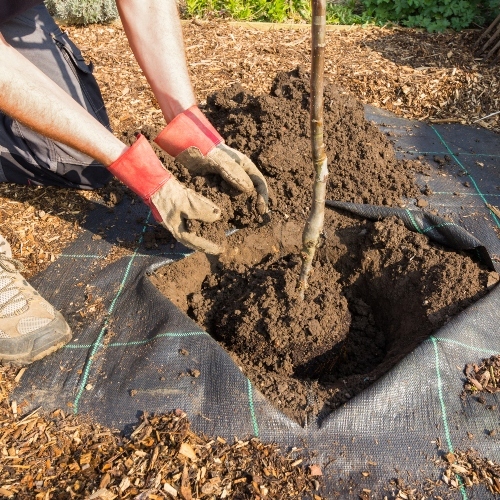Simplifying the Subject of Soil Texture

Introduction
Soil texture is one of the primary ways by which arborists, landscapers, and other professionals with dirt under their fingernails classify soils.
Determined by the size distribution of the particles in a sample, soil texture influences the characteristics of the soil in several important ways, which in turn influence the living organisms that depend on the soil, such as plants and trees.
Soil Texture Basics

A Close-up View of a Handful of Soil - Photo by Jing
Grains of inorganic, mineral-based materials occur in various sizes. Soil scientists group these varied particles into three primary categories:
- Sand particles are the largest of the three types, measuring between 0.05 and 2.0 millimeters in diameter (particles larger than this are classified as gravel or rock).
- Silt particles are slightly smaller than sand particles and measure between 0.002 and 0.05 millimeters.
- Clay particles are the smallest of the three; every grain is smaller than 0.002 millimeters.
Although some areas have soils comprised exclusively of a single size class (for example, a sandy beach may be comprised exclusively of large-grained soil), most soils feature a mix of more than one size class. The ratio of these three sizes determines the texture of the soil. The ideal mix for many plants is called loam; it contains a mixture of all three size classes, although it is not comprised of equal amounts of each. Instead, loams are made up of 40 percent sand, 40 percent silt, and 20 percent clay. Many soil textures are named things like “sandy loam" or “silty clay."
In such cases, the second term indicates the primary constituent of the soil, while the first word indicates the secondary component. In other words, a silty clay is a clay-based soil with lots of silt and relatively little (if any) sand. The actual names used to describe various ratios vary based on the authority consulted. For example, the USDA and UK-ADAS employ slightly different naming conventions, but the basic concepts remain the same.
Pores Large and Small

Ideal Planting Soil with A Good Ratio of Particle Size and Density
It turns out that particle size has a significant effect on the characteristics of the soil.
The feel (texture) of the soil is one of the most obvious differences—sand grains feel gritty, silt grains feel smooth, and clay grains feel sticky. However, more differences appear with further examination, most of which relate to the differences in surface area and the size of the pores created between the grains. The smaller a particle’s diameter is, the higher its surface area (relative to its volume) becomes. To visualize the difference, consider a Rubik’s Cube. The popular children’s toy of the 1980s has nine squares on each side. For argument’s sake, assume that each square is one square inch in size.
This means that each face of the toy is 9 square inches in size, and the entire volume it occupies is 27 cubic inches.
This means that the cube has a surface-to-volume ratio of 9/27 (approximately 0.33). If we double the length of each side (making them six squares long by six squares wide), we get 36-square-inch faces and a total volume of 216 cubic inches. This means that the surface-to-volume ratio of the enlarged toy becomes 36/216 (approximately 0.16).
Doubling the length again makes the point even clearer. Now, the Rubik’s cube has 144-square-inch faces and a total volume of 1728 cubic inches. This means that the surface-to-volume ratio for this twice-enlarged cube is 144/1728 (approximately 0.083).
In other words, every time we increase the size of the toy (or anything else, such as a soil particle) we increase the relative amount of volume much more quickly than we do the surface area of the item. This has several important implications.
Factors Influenced by Soil Texture

Soil Texture Will Influence the Health of This Newly Planted Tree
As we have seen, small soil particles have more relative surface area than larger soil particles do. Because most soil particles bear negative charges, and the important nutrients required by plants and trees are positively charged ions, smaller particles attract and retain a relatively greater amount of nutrients than larger soil particles do. This means that in many cases, clay soils contain more nutrients than sandy soils do. But this does not mean clay soils are ideal. By virtue of their small particle size, clay soils are incredibly dense in comparison to other soils; for a sample of a given size, clay-based soils contain far more individual particles than silt- or sand-based soils do. This density makes it difficult for roots to grow through the soil, which limits plant growth. Different soil textures also behave differently with respect to water retention. Clay-based soils retain water very well—often problematically so—while sandy soils are unable to retain much water at all.
The Significance of Soil Texture
Although many authorities state that it is impossible to alter soil texture, this is not entirely true. You can alter soil texture by adding new material to change the relative proportions of the constituents. However, because of the volumes typically necessary, the costs associated with making wholesale changes quickly become prohibitive. While you can easily change the soil texture in a large flowerpot, changing the soil texture of your yard would be an incredibly difficult, expensive, and laborious task. It would probably just be easier to move. Accordingly, you should usually view your soil texture as an invariant characteristic, even though it is theoretically possible to alter it.
Conclusion
Understanding soil texture is more than just a gardening practice; it's a fundamental aspect of ensuring the health and longevity of your plants. By recognizing the unique soil types prevalent in the San Francisco Bay Area, you can make informed decisions about planting, watering, and maintaining your garden. At Arborist Now, we are committed to providing you with the expertise and services needed to help your urban landscape flourish. Embrace the knowledge of soil texture, and watch as your garden transforms into a thriving, sustainable ecosystem. Whether you are a novice gardener or a seasoned arborist, mastering the art of soil management is a step toward greener, more resilient growth.
If you would like to know what types of trees are best suited for your soil textures, contact us today! Arborist Now is always ready to help.
Originally published on May 30, 2016.





